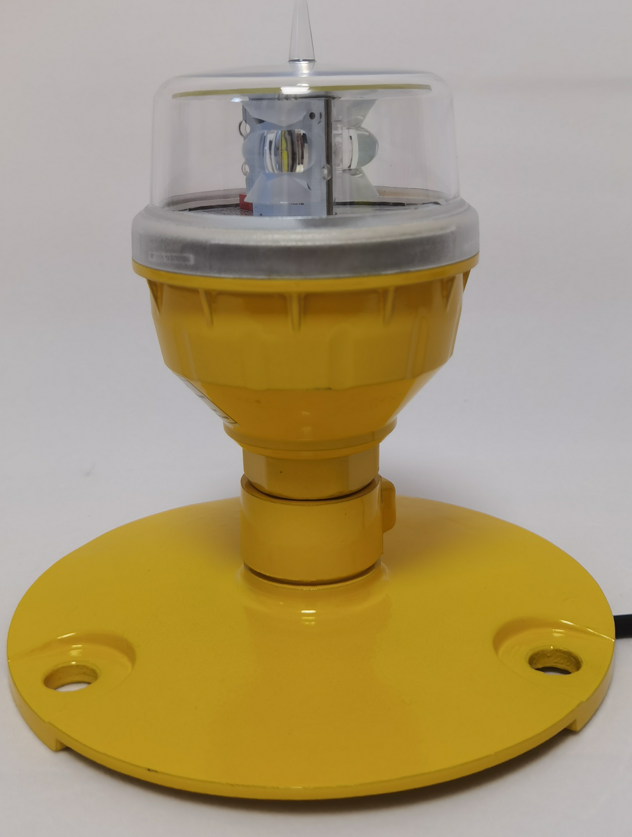Illuminating the Future: The Transformative Impact of LED Helipad Lights
In the critical realm of aviation safety, few advancements have been as transformative as the integration of Light Emitting Diode (LED) technology into helipad lighting systems. LED helipad lights have revolutionized nighttime and low-visibility operations, offering unparalleled reliability, efficiency, and performance. This article explores the technical superiority, operational benefits, and critical safety enhancements delivered by these modern lighting solutions, demonstrating why they have become the unequivocal standard for helipads worldwide.
The Technological Leap from Conventional Lighting
Traditional helipad lighting relied on incandescent or halogen fixtures, which presented significant limitations. These older technologies were characterized by high energy consumption, short lifespans, and vulnerability to vibration and shock—a major drawback in the high-stress environment of rotorcraft downwash. The advent of LED helipad lights marked a paradigm shift. LEDs are solid-state devices that convert electricity directly into light, eliminating fragile filaments and glass envelopes. This fundamental difference in design translates into a quantum improvement in durability, efficiency, and operational longevity.
Core Advantages Defining a New Standard
The superiority of LED helipad lights is evidenced across multiple performance dimensions critical to aviation safety.
1. Exceptional Energy Efficiency and Sustainability:
LED technology is inherently efficient, producing more lumens per watt than any conventional alternative. This dramatically reduces the electrical load required to operate a full helipad lighting system. For remote or offshore helipads powered by generators or solar arrays, this efficiency is not just beneficial—it is operationally enabling. The reduced power demand allows for smaller, more cost-effective power systems and extends operational hours for battery-backed installations, supporting a more sustainable aviation infrastructure.

2. Unmatched Longevity and Reduced Maintenance:
The operational lifespan of LED helipad lights is measured in tens of thousands of hours, vastly exceeding that of traditional bulbs. This longevity is a game-changer for maintenance logistics. Facilities can avoid the frequent, costly, and often hazardous replacements associated with older lights, especially those in difficult-to-access locations like hospital rooftops or offshore platforms. The reduced maintenance burden ensures higher system availability and enhances overall safety by minimizing the risk of light failures.
3. Superior Durability and Performance Under Stress:
Constructed with robust housings and solid-state components, LED helipad lights are engineered to withstand extreme conditions. They are highly resistant to shock, vibration, and the intense pressure of rotor downwash. Furthermore, they achieve full brightness instantly, even in cold weather where conventional lights can be slow to warm up. This instant-on capability is vital for emergency situations. Their sealed designs offer high IP ratings, protecting against moisture, dust, chemicals, and salt corrosion, ensuring reliable performance in the harshest environments.
| led helipad lights |
4. Enhanced Visibility and Precision for Pilots:
LED helipad lights provide crisp, high-contrast illumination that is easily distinguishable from urban background lighting. Modern systems offer excellent photometric performance, with precise beam angles that define the landing area without causing glare that could impair a pilot's night vision. Many systems feature adjustable intensity settings, allowing operators to tailor light levels to specific ambient conditions, such as reducing brightness for urban operations or maximizing it for foggy or well-lit daytime environments.
Integration and Smart Control Capabilities
The modern LED helipad light is rarely a standalone unit; it is typically part of an intelligent networked system. These systems can be integrated with photocells for automatic dusk-to-dawn operation and can be centrally controlled and monitored from a remote location. Smart diagnostics can alert maintenance crews to individual light failures or power issues before they become a safety concern, enabling a proactive approach to system management and ensuring constant operational readiness.
| led helipad light |
The Critical Role in Safety and Operational Readiness
The implementation of a high-performance LED helipad lights system is a direct investment in risk mitigation. For hospital medevac services, offshore energy operations, and law enforcement agencies, the ability to conduct safe landing operations around the clock is mission-critical. These lights provide the visual certainty pilots need to execute precise approaches and landings in darkness or adverse weather, directly contributing to the safety of crew, passengers, and ground personnel. They also ensure compliance with stringent aviation authority regulations, which mandate specific lighting configurations for certified helipads.
LED helipad lights represent more than just an incremental improvement; they constitute a fundamental advancement in aviation ground lighting technology. By delivering unmatched reliability, efficiency, and performance, they have set a new benchmark for safety and operational capability. As urban air mobility and emergency medical services continue to expand, the role of these advanced, dependable lighting systems in securing safe skies will only grow more vital. They are not merely lights; they are a foundational pillar of modern aviation infrastructure.
